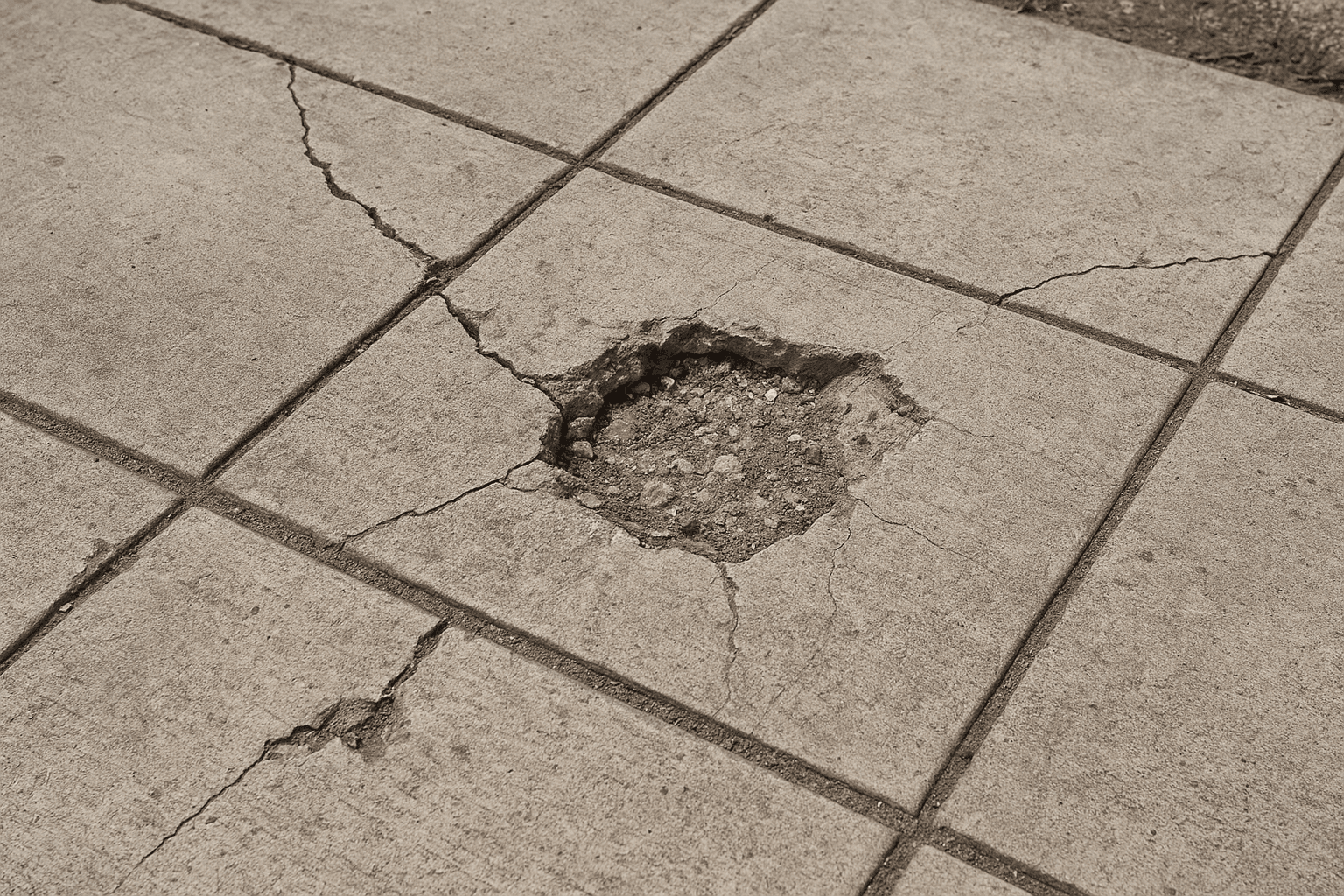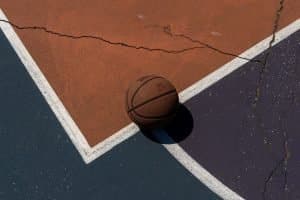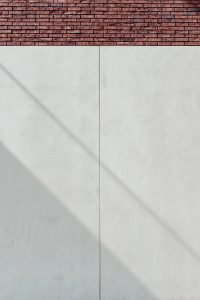You know that feeling when you pull into the Driveway after a long day, the garage door is opening, and you feel that distinct thump as your tires hit the lip of the concrete? It’s one of those little annoyances we tend to ignore—like a squeaky hinge or a flickering bulb—until one day, you’re tripping over it while carrying groceries.
Wait, Is That Crack New?
Here’s the thing about concrete: it’s tough, but it isn’t invincible. Especially here in Ogden. We get the snow, we get the scorching heat, and we get everything in between. That freeze-thaw cycle is brutal on rigid materials. So, when you look down at your Sidewalk or Patio, you might see a few lines running across the surface.
But how do you know if it’s just a cosmetic blemish or a sign of serious trouble underneath?
Honestly, hairline cracks are pretty common. Concrete shrinks as it cures, and sometimes tiny fissures appear. They aren’t pretty, but they usually aren’t an emergency. However, if you can fit a dime—or worse, a quarter—into that crack, the ground beneath your feet is moving. This is often caused by soil erosion or poor compaction when the concrete was first poured.
If the crack is uneven, meaning one side is higher than the other, that’s a red flag. It means the subgrade (the dirt supporting the slab) has washed away or settled. Once that support is gone, gravity does the rest, and the heavy slab snaps under its own weight.
The Dreaded “Toe-Stubber” (Uneven Slabs)
You might notice this on your front walkway first. You’re walking up to the porch, and suddenly your toe catches an edge. You stumble, look down, and realize one square of the sidewalk has sunk an inch lower than the rest.
We call these trip hazards, and they are a massive liability.
If you have kids running around, or elderly relatives visiting, uneven concrete is a lawsuit waiting to happen. It’s not just about safety, though; it’s about the health of the concrete itself. When slabs settle unevenly, they create stress points. Eventually, that stress causes the slab to shatter rather than just crack.
Why does this happen? Usually, it’s water. Water is tricky. It finds a way under your driveway or sidewalk, washes out the soil, and leaves an empty void. The concrete is essentially floating on air until—crack—it drops.
Common Areas for Sinking:
- Driveway aprons (where the driveway meets the garage)
- Steps leading up to a porch
- Pool decks
- Sidewalk joints
Water Pooling Where It Shouldn’t
Speaking of water, pay attention to where the rain goes next time we get a storm.
Your concrete surfaces should be graded to encourage water to run away from your home. It’s simple physics. But if you notice puddles forming in the middle of your driveway or, worse, pooling right up against your home’s foundation, you have a settlement issue.
When concrete sinks, it changes the drainage pitch. Instead of shedding water, the slab starts to act like a bowl.
You know what? This is actually more dangerous than the crack itself. Standing water, especially in winter, turns into ice patches. Plus, if that water is pooling against your foundation, it can seep into your basement or crawl space, leading to mold and structural rot. It’s a domino effect. What starts as a sunken patio slab can end up as a flooded basement.
Why Is My Concrete Flaking Off?
Have you ever looked at your driveway and thought it looked a bit like the surface of the moon? Rough, pitted, and dusty?
That’s called spalling (or sometimes scaling). It happens when the top layer of the concrete paste flakes away, exposing the rough aggregate underneath. It looks terrible, frankly.
In Ogden, salt is the usual suspect here. We use de-icing salts to keep our walkways safe in the winter, but that salt attacks the chemical bonds in the concrete. Even if you don’t salt your own driveway, your car drags in that slushy, salty mess from the roads.
But here is the nuance: spalling can also be a sign of a bad mix. If the original contractor added too much water to the concrete to make it easier to pour, the surface ends up weak.
Can you fix spalling?
Sometimes you can resurface it, but if the damage is deep or accompanied by sinking, you might need to lift the slab first to ensure the new surface doesn’t just crack again immediately.
Doors and Windows Are Sticking
This one sounds strange, right? What does a sticking door have to do with concrete?
If your home is built on a slab foundation, or if you have a garage attached to the house, shifting concrete affects the framing of the structure. When the slab settles, it pulls the walls down with it, ever so slightly. Suddenly, the garage door doesn’t seal right at the bottom. Or the door from the garage to the house gets jammed in the jamb.
It’s subtle at first. You might just think it’s humidity making the wood swell. But if it persists, check the floor. Internal floor cracks or a visible gap between the floor and the baseboards are dead giveaways that the slab is sinking.
The “Hollow” Sound
This is a neat little trick you can try yourself. It’s kind of fun, actually.
Grab a hammer, or even a heavy chain, and drag it across your concrete. Or just tap the surface. Solid concrete supported by dirt has a dull, heavy thud. Concrete that has a void underneath it—where the soil has washed away but the slab hasn’t broken yet—will sound hollow or drum-like.
If you hear that hollow sound, you’re on borrowed time. The void is there, and the concrete is just waiting for a heavy enough load (like a delivery truck or a new appliance) to snap it. Catching this early is the best-case scenario because mudjacking or polyjacking can fill that void before the concrete actually breaks.
Repair vs. Replace: The Honest Truth
So, you’ve spotted some of these signs. The cracks, the sinking, the puddles. Your immediate thought is probably, “Great, I have to rip out my driveway and pour a new one. There goes my vacation fund.”
Hold on a second.
Most homeowners assume replacement is the only option, but that’s rarely the case. In fact, unless the concrete is pulverized into rubble, Concrete Lifting is usually the smarter play.
Let me break it down for you in a way that makes sense financially and logically.
| Feature | Concrete Lifting (Repair) | Concrete Replacement |
|---|---|---|
| Cost | Generally 50-70% cheaper than replacement | Expensive (Labor + Materials + Disposal) |
| Time | Done in a few hours | Takes days (Demolition, Pouring, Curing) |
| Mess | Minimal (small holes drilled) | Heavy machinery, dust, ruined lawn edges |
| Use | Walk/Drive on it almost immediately | Wait 7-28 days to cure fully |
When we do Mud Jacking (pumping a slurry mixture under the slab) or use polyurethane foam, we are essentially hydraulically lifting the concrete back to its original position. It stabilizes the soil, fills the voids, and levels the surface.
It’s cleaner, faster, and keeps thousands of pounds of old concrete out of the landfill.
Don’t Let the Weeds Win
We’ve all seen it. That one house on the block with dandelions growing straight out of the driveway cracks. It sends a message, doesn’t it? It says the property isn’t maintained.
Aside from the structural issues, there’s an aesthetic cost to damaged concrete. If you are thinking of selling your home in the near future, the condition of the driveway and sidewalks is the first thing a buyer sees. Curb appeal isn’t just about painting the front door; it’s about clean lines and safe walkways.
Inspectors will flag trip hazards immediately. You’ll likely have to fix them to close the deal anyway, so you might as well fix them now and enjoy a smooth driveway while you still live there.
The “DIY” Trap
I know, I know. We live in the era of YouTube. You might be thinking, “Can’t I just buy a bag of cement at the hardware store and patch this?”
For a tiny hairline crack? Sure. Go for it.
But if you have settlement? No. Smearing patch material over a crack on a sinking slab is like putting a Band-Aid on a broken leg. The slab is still moving. The patch will crack within a month, and you’ll be back to square one—except now it looks even messier because of the mismatched patch color.
Professional Concrete Leveling addresses the root cause: the lack of support underneath. It’s a specialized skill requiring specific pumps and pressures. It’s one of those things where the DIY route often ends up costing more in the long run because you have to pay someone to undo the mess.
Is It Time to Call the Pros?
Look, concrete doesn’t heal itself. It’s not like a cut on your finger. If your driveway is sinking, it’s only going to sink further. If water is pooling, it’s going to erode more soil.
Here in Ogden, we have a short window of perfect weather for these projects, though mud jacking can be done in various conditions. Ignoring the signs usually means the repair bill grows alongside the size of the crack.
If you’re seeing the signs—the uneven steps, the hollow sounds, the cracks that seem to be getting wider by the week—it’s time to get a professional opinion. You don’t have to commit to anything, but knowing what’s going on under your slab gives you peace of mind.
At Mud Dog Jacking, we specialize in saving your concrete so you don’t have to replace it. We know the local soil, we know the weather, and we know how to get your slabs level again without tearing up your yard.
Don’t wait until someone trips or the water damage sets in.




